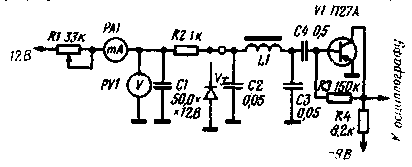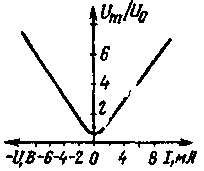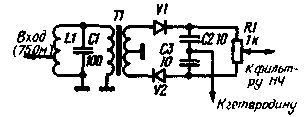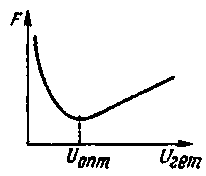On the choice of mixing diodes for a direct conversion receiver. Encyclopedia of radio electronics and electrical engineering

Encyclopedia of radio electronics and electrical engineering / radio reception
 Comments on the article
Comments on the article
In direct conversion radio receivers (for example, "Radio", 1973, No. 7, pp. 15, 16), the high-frequency input signal is converted directly into audio frequencies. To reduce crosstalk and interference arising from the direct detection of amplitude modulated signals of powerful stations, it is desirable to have a minimum high frequency gain (before conversion). In this case, the sensitivity of the receiver strongly depends on the type and quality of the mixing diodes. Particularly noticeable is the low-frequency diode noise component, which is proportional to 1/f.
To test the noise properties of the diodes, a device was used (Fig. 1), which included the input stage of a low-frequency amplifier on transistor VI and a low-pass filter C2L1C3 with a cutoff frequency of 5 kHz. Frequencies below 300 Hz were attenuated due to the relatively small capacitance of capacitor C4. The noise level was measured with an S1-70 oscilloscope with a highly sensitive (10 µV/div) 1U14 unit. When using a less sensitive oscilloscope, you need to add 1-2 bass amplifier stages.

Ris.1
The effective noise floor Uo of the amplifier, normalized to the input, was 0,32 μV. The input impedance of the bass amplifier is about 1 kOhm. Connecting the diode under test caused an increase in noise up to a certain value Um. A typical dependence of Um / Uo on the forward current I through the diode and on the reverse bias U for the D18 diode is shown in fig. 2.

Fig. 2 Since both branches of the characteristic are close to linear, to assess the quality of diodes, one can limit oneself to measuring noise at a fixed bias, for example, at a current of +10 mA and a voltage of -10 V. The Um / Uo ratios obtained by measuring for several types of diodes are given in the table.
| Diode |
Um/Uo |
К |
Feelings. at S/N=10dB, µV |
F |
| Icm=10mA |
Usm=-10 V |
| D18 |
7 |
8 |
7,5 |
2 |
265 |
| D9 |
3 |
10 |
6,5 |
1,7 |
200 |
| GD507A |
2 |
1,5 |
1,75 |
0,9 |
50 |
| D311 |
1,1 |
1,2 |
1,15 |
0.75 |
37 |
| KD503A |
1 |
1,2 |
1,1 |
0,7 |
32 |
In the receiver, the mixer diodes are acted upon by a high-frequency local oscillator voltage, causing both forward current and reverse bias. Therefore, the table also shows the conditional indicator K of the quality of the diode, found as the arithmetic mean between the values of Um / Uo at a forward current of 10 mA and a reverse bias voltage of -10 V.
All diodes listed in the table were also tested in a balanced mixer (Fig. 3) at a frequency of 18 MHz. The LICI circuit was tuned to the middle frequency of the range. The balancing transformer T1 was wound on a M100NN ferrite ring (size K7X4X2) with a PELSHO 0,25 wire.

Ris.3
Its primary winding contained 18, and the secondary 12 turns (outlet from the middle). Precise balancing of the mixer was carried out with a variable resistor R1. From the output of the mixer, the signal was fed to a low-pass filter (Fig. 1). Measured sensitivity value (at S/N ratio of 10 dB). The calculated noise factor F of the receiver is also shown in the table. It turned out that the noise figure of the mixer is approximately proportional to the conditional quality indicator K. measured at low frequencies when mixing the diode with direct current. Therefore, the device (Fig. 1) allows you to evaluate the suitability of diodes for a direct conversion receiver mixer.
For each type of diode, the optimal local oscillator voltage was selected to provide the best sensitivity. Its amplitude turned out to be 0,2-0,3 V for germanium and 0,6-0,7 V for silicon diodes. The qualitative dependence of the noise figure on the local oscillator voltage is shown in fig. four.

Ris.4
At low voltages, the noise factor increases due to the drop in the mixer gain, and at high voltages, due to the increasing noise of the diodes themselves.
Author: V. Polyakov, N. Chubinsky, Moscow; Publication: N. Bolshakov, rf.atnn.ru
 See other articles Section radio reception.
See other articles Section radio reception.
 Read and write useful comments on this article.
Read and write useful comments on this article.
<< Back
 Latest news of science and technology, new electronics:
Latest news of science and technology, new electronics:
Artificial leather for touch emulation
15.04.2024
In a modern technology world where distance is becoming increasingly commonplace, maintaining connection and a sense of closeness is important. Recent developments in artificial skin by German scientists from Saarland University represent a new era in virtual interactions. German researchers from Saarland University have developed ultra-thin films that can transmit the sensation of touch over a distance. This cutting-edge technology provides new opportunities for virtual communication, especially for those who find themselves far from their loved ones. The ultra-thin films developed by the researchers, just 50 micrometers thick, can be integrated into textiles and worn like a second skin. These films act as sensors that recognize tactile signals from mom or dad, and as actuators that transmit these movements to the baby. Parents' touch to the fabric activates sensors that react to pressure and deform the ultra-thin film. This ... >>
Petgugu Global cat litter
15.04.2024
Taking care of pets can often be a challenge, especially when it comes to keeping your home clean. A new interesting solution from the Petgugu Global startup has been presented, which will make life easier for cat owners and help them keep their home perfectly clean and tidy. Startup Petgugu Global has unveiled a unique cat toilet that can automatically flush feces, keeping your home clean and fresh. This innovative device is equipped with various smart sensors that monitor your pet's toilet activity and activate to automatically clean after use. The device connects to the sewer system and ensures efficient waste removal without the need for intervention from the owner. Additionally, the toilet has a large flushable storage capacity, making it ideal for multi-cat households. The Petgugu cat litter bowl is designed for use with water-soluble litters and offers a range of additional ... >>
The attractiveness of caring men
14.04.2024
The stereotype that women prefer "bad boys" has long been widespread. However, recent research conducted by British scientists from Monash University offers a new perspective on this issue. They looked at how women responded to men's emotional responsibility and willingness to help others. The study's findings could change our understanding of what makes men attractive to women. A study conducted by scientists from Monash University leads to new findings about men's attractiveness to women. In the experiment, women were shown photographs of men with brief stories about their behavior in various situations, including their reaction to an encounter with a homeless person. Some of the men ignored the homeless man, while others helped him, such as buying him food. A study found that men who showed empathy and kindness were more attractive to women compared to men who showed empathy and kindness. ... >>
 Random news from the Archive Random news from the Archive Artificial intelligence to control alien bases
29.11.2018
A group of engineers from TRACLabs Inc are working on a planetary base monitoring system that will in some ways resemble the infamous HAL 9000 from Stanley Kubrick's 2001: A Space Odyssey.
The new artificial intelligence for managing extraterrestrial bases is called CASE (cognitive architecture for space agents - cognitive architecture for space vehicles)
The system is designed to control a base on another planet, say Mars. She has to take care of everyday but critical tasks like maintaining oxygen levels and getting rid of waste. Such a system must know what to do and how to do it while performing tasks with the help of robotic arms. That is why CASE is designed as a three-layer system. The first layer is responsible for controlling the "iron", such as power supply systems, life support systems, and so on.
The second layer is responsible for managing the programs that control the hardware. But the third layer is the most curious. He is responsible for devising solutions in response to emerging problems, for example, if one module is depressurized, it will urgently need to isolate it from the rest. Moreover, the new AI will have a so-called ontological system - that is, according to the profile of work, it must be aware of itself and make independent decisions, comparing data from sensors, previous learned experience and information received from people. That is why the system will communicate with people exactly as depicted in the film. That is, to have a dialogue.
Scientists have already built a prototype planetary base in virtual reality, and CASE has been able to control it for four hours so far. So there is a lot of work to be done. But in the end, the researchers have at least ten years left, because people will not get to Mars very soon.
|
 Other interesting news:
Other interesting news:
▪ Steam balloon will make it easier to launch satellites
▪ Slim, flexible NEC battery charges in 30 seconds
▪ Robotic London Underground trains
▪ Crystals that change shape
▪ Intel Alder Lake vPro Processors
 News feed of science and technology, new electronics
News feed of science and technology, new electronics
 Interesting materials of the Free Technical Library:
Interesting materials of the Free Technical Library:
▪ section of the site Stories from the life of radio amateurs. Selection of articles
▪ article Last will be first. Popular expression
▪ article Who made the first sewing machine? Detailed answer
▪ article Carbine choke. Travel Tips
▪ article Automotive ULF on the TDA1562Q chip. Encyclopedia of radio electronics and electrical engineering
▪ article Microcontrollers of popular families. Encyclopedia of radio electronics and electrical engineering
 Leave your comment on this article:
Leave your comment on this article:
 All languages of this page
All languages of this page
Home page | Library | Articles | Website map | Site Reviews

www.diagram.com.ua
2000-2024







 Arabic
Arabic Bengali
Bengali Chinese
Chinese English
English French
French German
German Hebrew
Hebrew Hindi
Hindi Italian
Italian Japanese
Japanese Korean
Korean Malay
Malay Polish
Polish Portuguese
Portuguese Spanish
Spanish Turkish
Turkish Ukrainian
Ukrainian Vietnamese
Vietnamese




 Leave your comment on this article:
Leave your comment on this article: